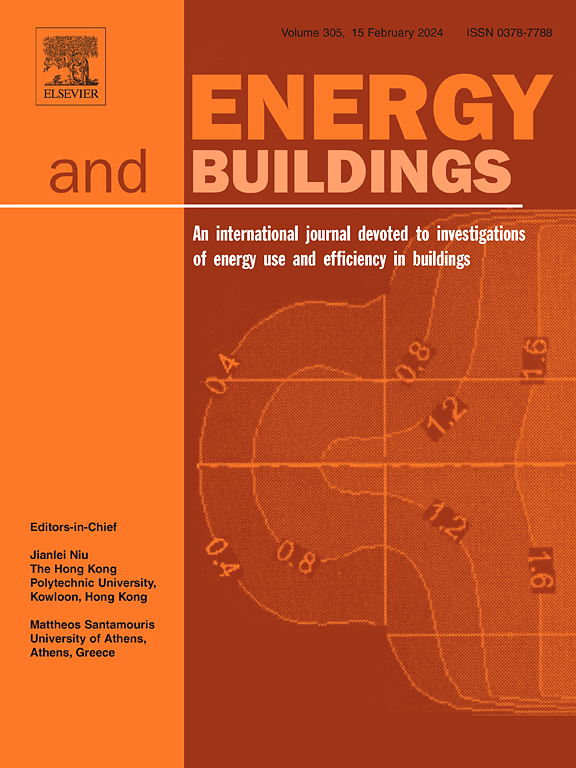Fully exploiting solar energy with building envelops: Experimental study on an adjustable photovoltaic green facade
IF 6.6
2区 工程技术
Q1 CONSTRUCTION & BUILDING TECHNOLOGY
引用次数: 0
Abstract
An innovative adjustable photovoltaic green facade (APVGF) was proposed that combines an adjustable photovoltaic (PV) blind system with a green facade (GF), offering high flexibility, significant energy output, excellent architectural aesthetics, and considerable building energy-saving potential. Experimental evaluations with identical test boxes showcased the system’s multifaceted benefits, including a notable decrease in the average daytime temperature of window glass by 4.2 ℃ and 5.2 ℃ for the GF and APVGF, respectively, with peak reductions reaching 9.7 ℃ and 13.7 ℃. The interior air temperature was reduced by an average of 6.5 °C and 7.7 °C, with maximum reductions of 15.3 °C and 18.6 °C. Additionally, the GF and the APVGF reduced the daytime average light intensity inside the test box by 6837 and 7706 lx, reducing the glare risk. High temperatures and self-shading significantly reduced the power generation efficiency of the PV modules in the auto-adjusting and 30° fixed modes. However, the higher total equivalent irradiance (GE) received in auto-adjusting angle mode resulted in daily power generation being approximately 17.2 % and 22.5 % higher than that in the 30° and 90° fixed angle modes. The APVGF system’s key innovation is its dual-purpose design: it adjusts the angle of the PV blinds based on the sun’s position and environmental needs, boosting PV efficiency, and it enhances the building’s ecological and aesthetic value with a green facade. This system marks a breakthrough in green building tech and offers a new approach to urban sustainability.
求助全文
约1分钟内获得全文
求助全文
来源期刊

Energy and Buildings
工程技术-工程:土木
CiteScore
12.70
自引率
11.90%
发文量
863
审稿时长
38 days
期刊介绍:
An international journal devoted to investigations of energy use and efficiency in buildings
Energy and Buildings is an international journal publishing articles with explicit links to energy use in buildings. The aim is to present new research results, and new proven practice aimed at reducing the energy needs of a building and improving indoor environment quality.
 求助内容:
求助内容: 应助结果提醒方式:
应助结果提醒方式:


